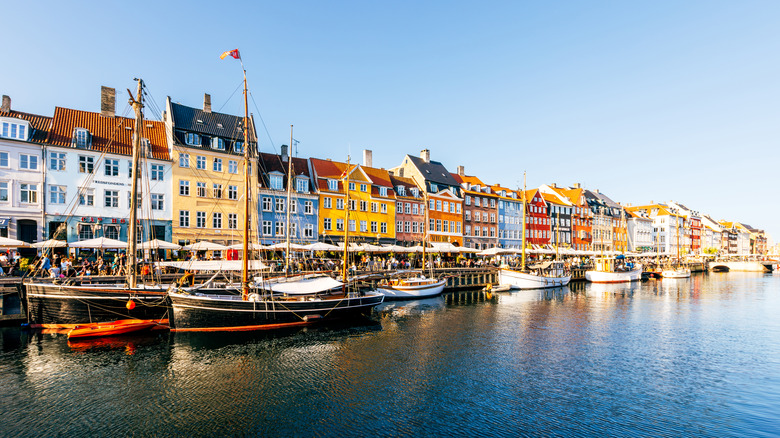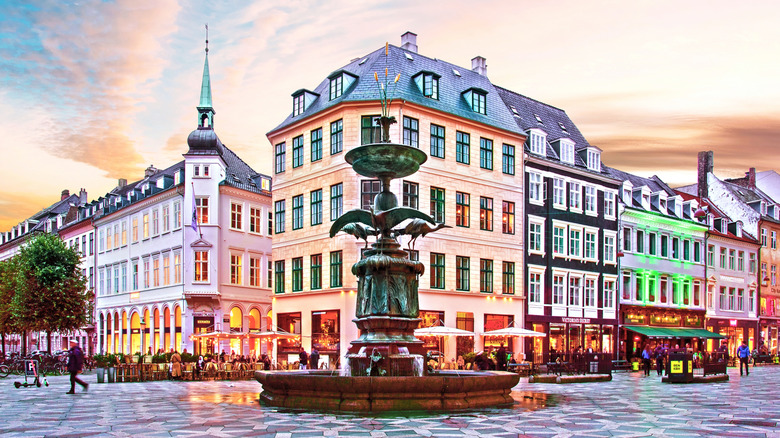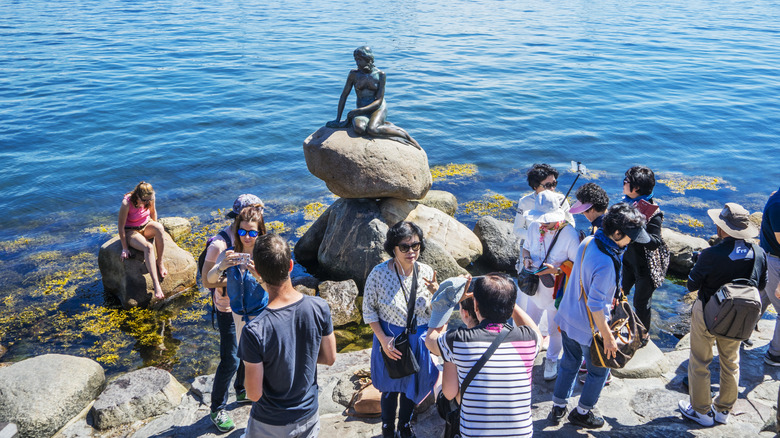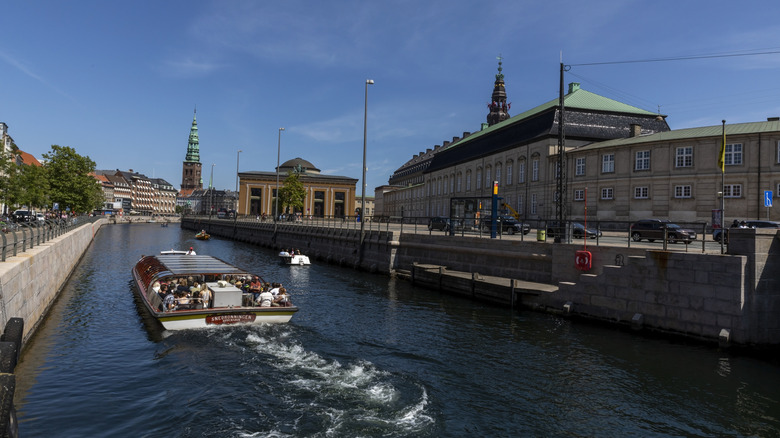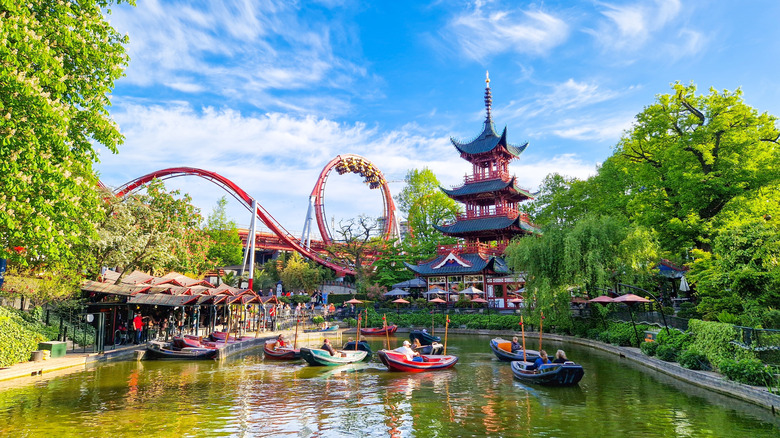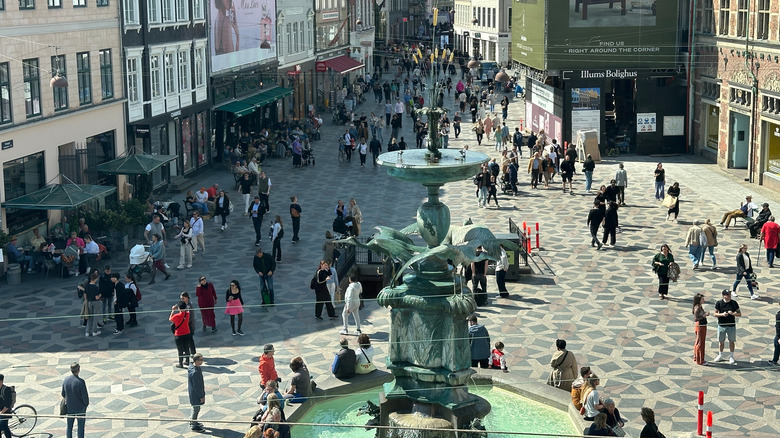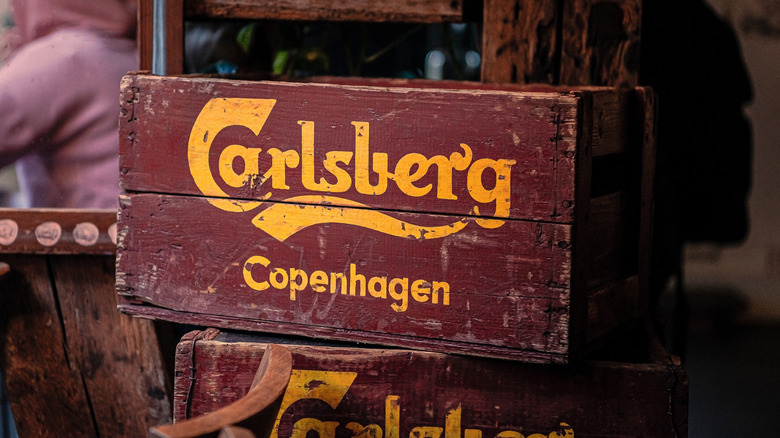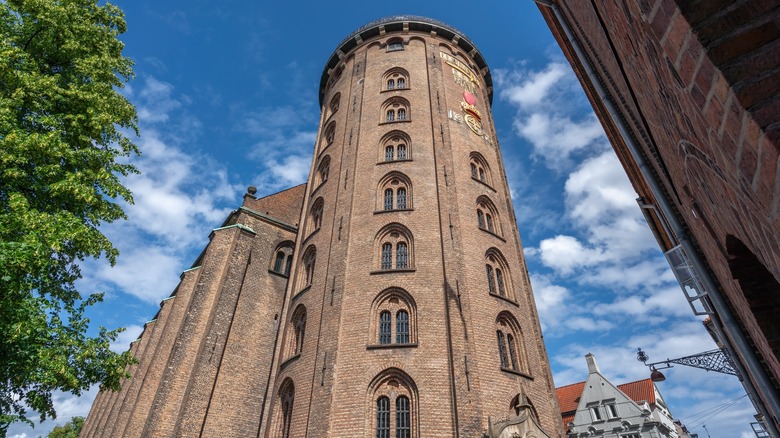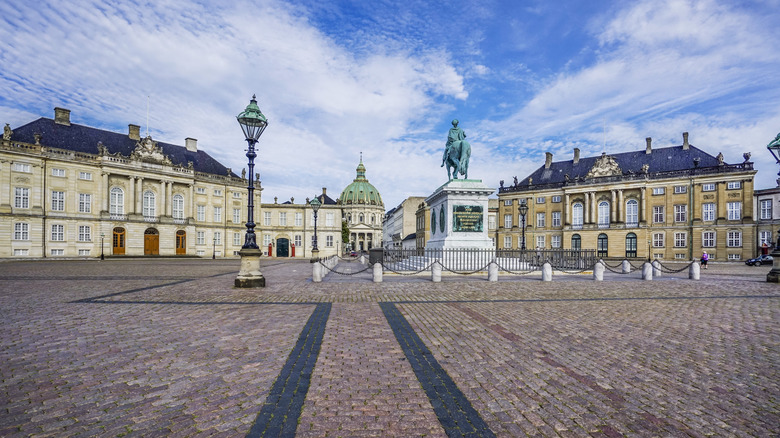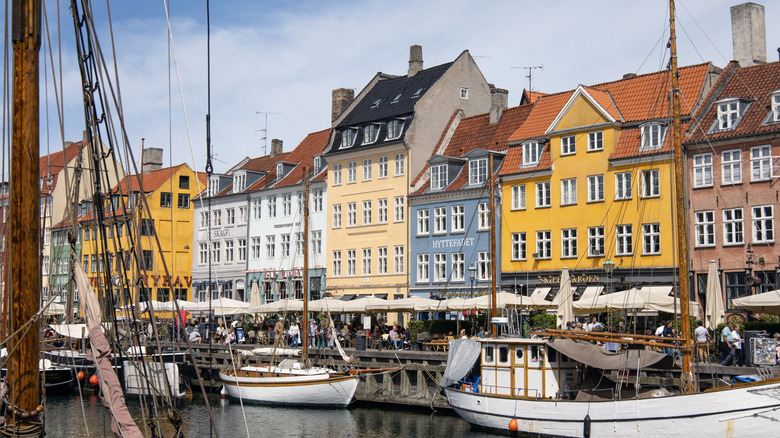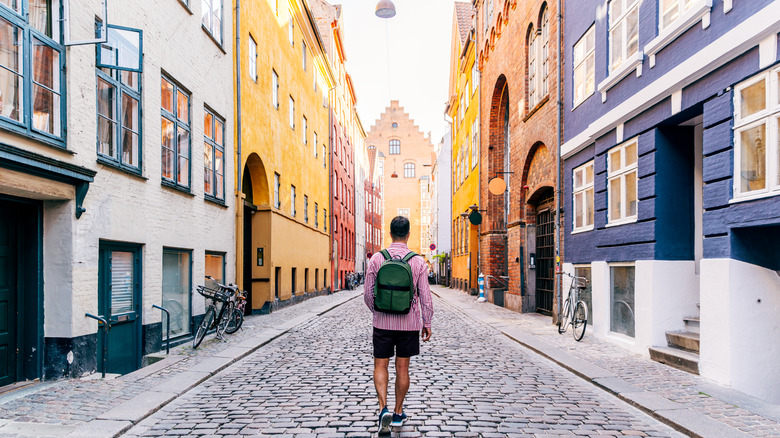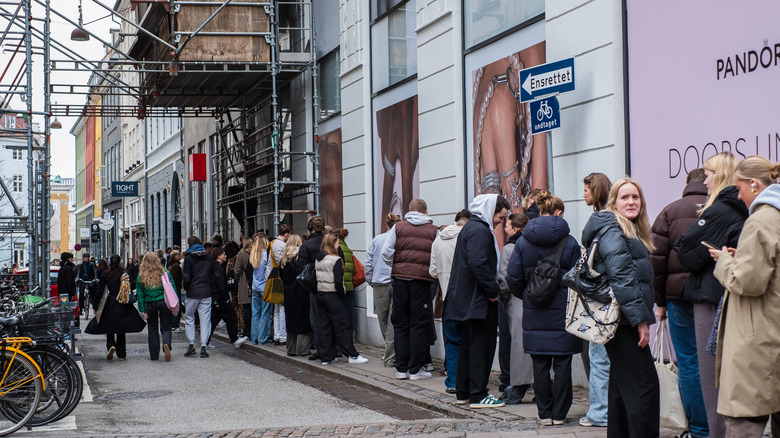Copenhagen's Ten Biggest Tourist Traps You Need To Avoid, According To Someone Who Knows The City Well
Copenhagen might not be at the forefront of people's minds when it comes to a European vacation. Those seeking sun, sea, and sand are liable to cast their gaze south towards the continent's Mediterranean underbelly. Seekers of moments of Instagram infamy gravitate towards the big hitters of the region: London, Paris, or Rome.
And yet, Copenhagen's reputation as a must-visit city — especially in the eco-friendly category — has been on the rise for quite some time now. Over three million visitors flock there every year, drawn in by that sense of exploration one only gets when traveling off the beaten track. Those who make the trip to this oft-frozen corner of Europe rarely regret the decision. Journeys begin with a flight into one of Europe's least stressful airports and continue towards the city's signature blend of architecture, cuisine, and historical Nordic charm.
Situated on not one but two islands — Zealand and Amager — within walking distance of the train station, you will find one of the world's oldest amusement parks, a world-class Christmas market, and some of the best restaurants in the world. The surrounding water is so clean that you can catch your dinner in it — although you'll need a permit — and the surrounding area is dotted with lakes, nearby skiing resorts, and scenery that will take the breath right out of your lungs.
And yet, for all that is laudable about Copenhagen — the 8th most northerly capital in the world – it is at its core a city like any other. Home to a working population of busy commuters, Denmark's capital offers its fair share of overcrowded and overpriced tourist traps, inflection points that might look good on paper, bu in the grand scheme of things, are perhaps best avoided. Here are 10 of them.
Nordic Noir tours
In 2007, a Danish scriptwriter and producer released what was to become one of Copenhagen's most recognizable exports. Forbrydelsen was intended for the domestic audience, shot in and around Copenhagen and scripted entirely in Danish; there was little reason for anyone to suspect the show would reach much far beyond the nation's shores. Nothing could have been further from the truth.
Subtitled versions, rebranded as The Killing, began to proliferate, the show won a BAFTA in the UK, and it was followed not long after the end of its three-season run by an American remake. It sparked a trend that soon became known as Nordic Noir, a series of darkly ambitious shows that included luminaries such as The Bridge and Borgen, the popularity of which had virtually no ceiling during the 2010s.
The sightseeing industry sensed an opportunity, and tours shadowing filming locations sprung up virtually overnight. Merchandise began to litter the stalls of local hot spots, lawsuits sprung up over who could produce luxury knitwear made famous by the show's protagonists, and otherwise quiet corners of the city suddenly found themselves inundated with fans eager to relive cherished moments of their favorite dramas.
Still, few of the more well-traveled spots were worth visiting, and those that were, such as the City Hall — which had a prominent place in Forbrydelsen's plot line — hardly required a guide to help you find them. As the popularity of the shows waned, so too did the crowds, but even today, it makes more sense to Google places of interest and take a trip there without any need to book an overpriced tour.
The Little Mermaid
Hans Christian Andersen, Copenhagen's most famous son, first penned The Little Mermaid in 1836. It tells the tale of a young mermaid princess who falls in love with a prince and journeys to the world of humans to win his heart.
In 1913, the much-loved character was honored with a memorialization in the form of a bronze statue that, today, sits at the waterside at the Langelinie promenade in Copenhagen. Several decades later, in 1989,Disney released an animated film of the same name. Suddenly, the statue became a must-see point of interest to erstwhile visitors to the Danish capital. Problems ensued.
To start with, the statue is tiny; at only four feet tall, you have to get fairly close to see much of anything. Designed as more of a homage than a crowd-pleaser, its location is not conducive to the staggering number of people clambering to get a shot of or pose next to it. To make things worse, its pedigree means that it little resembles the mermaid of the Disney film itself, and this can, at times, be an issue for some of the younger fans whose expectations have not been properly managed.
At peak season, there are long lines of people waiting to catch a glimpse of the mermaid, and the whole area is surrounded by hawkers trying to foist poorly-made wares on unsuspecting travelers. It all leads to a disappointing venture and one that only genuine superfans are likely to find worthwhile.
Canal boat cruises
If there is a truth universal to travel anywhere across the globe, it is that canal boat cruises are more often than not overpriced wastes of time. True, there are European cities with some truly stunning canals, but their beauty is often best enjoyed via a quiet stroll. Copenhagen is no exception to this rule.
The city's canal network sprung up in the 18th century, ostensibly to help power the city's powder mills and batteries, which were at the time an essential component of the country's national security. Today, they represent prime real estate, with restaurants, bars, and residences competing for their share of the picturesque, iconic waterfront.
The cost for a leisurely cruise past some of the most iconic landmarks the city has to offer is around $35 per head, and in truth, there is certainly plenty to see. But such sights come with caveats. Firstly, everything is viewed at a distance. You can sail past the Danish Film School, ancient bastions now converted into art galleries, and take snaps of the old naval base, but you can't disembark and experience them for yourself. From such a vantage point, the diminutive Little Mermaid Statue feels like an even bigger waste of time; as you pass on by, she sits with her back to you, radiating cool indifference.
Renting a bike is a far better and much more economical way to see the city, with all-day rentals often costing less than an hour's tour via the canal. Still, it's best to avoid the ubiquitous pay-as-you-go bikes; renting a normal one is a lot cheaper.
Tivoli Gardens
Tivoli Gardens is one of the oldest theme parks in the world, and the fact that people who have never even considered a trip to Denmark have heard of it speaks volumes about its pedigree. To be clear, Tivoli is a fantastic place and well worth a visit. But you have to pick your moment.
The place is busy at the best of times — and expensive all the time — but as with most things in life, working with the ebb and flow of things helps smooth out potentially bumpy rides. During peak times, Tivoli often get so packed that you'd be better off attending the nearby Bakken – the actual oldest amusement park in the world. Of course, what constitutes peak time is a little more complicated than it sounds.
For tourists, there are two principal seasons: midsummer and yuletide. The former takes advantage of the mild summer climate Copenhagen is well known for whilst simultaneously avoiding the rains of autumn and frankly shockingly cold reality of the Danish winter. The latter braves the cold in the hope of capturing some of the winter wonderland festivities that Copenhagen — and Tivoli specifically — are so well known for.
Sprinkled within and between these two seasons are some curiously unpredictable Danish public holidays. There are 15 of them in total. Easter is, of course, variable, as is Ascension Day and Pentecost, and, unfamiliar though some of these holidays are it's a good idea to check prior to booking your vacation. Visiting Tivoli, and even Bakken, is not recommended during these times.
Strøget Street
As is the case with most European city breaks, shopping is a quintessential part of the experience. People pay over the odds for luxury Parisian hotels clustered around the capital's Golden Triangle, flock to Oxford Street for the post-Christmas sales, and the Rhue du Rhone in Geneva, Switzerland is packed with tourists all year round. Of course, such places underwhelm as often as they delight, and the crowds, hawkers, and inflated prices are often a drain on both wallets and patience.
Strøget is Copenhagen's main shopping street and also one of the longest pedestrianized streets in all of Europe. Unfortunately, in recent years, there has been a certain homogenization of retail space across the continent. As a result, any company with the money to rent space here probably belongs to a brand you could find in almost any other city. It's crowded, and few people visit Copenhagen to enjoy a Starbucks, drink at an overpriced Irish pub, or pop into a Disney store to buy yet another plush toy memento.
The real Copenhagen is made up of the small businesses and local artisans that lend all great cities their unique character. Such entrepreneurs have an eye on value for money, and their premises lurk in the quiet, cheaper corners of the city, hidden from view down side streets or else clinging to the periphery of out-of-the-way plazas. It is here — in these forgotten alleys — that those willing to go off the beaten track will find the true spirit of Copenhagen.
Inner City Bars and restaurants.
Billboards advertising local eateries and pubs greet travelers as they exit Copenhagen's main train station. Certainly, there is no shortage of places to choose from in the immediate vicinity. The Danish capital, like any other major city in the world, caters to two kinds of people: locals and tourists. Locals rely on intimate knowledge of their home turf to sniff out bargains. Tourists, on the other hand, tend to adopt a much freer attitude toward spending. With little or no familiarity with the location, and a hazy at best understanding of how expensive things really should be, it's easy to fall into the stereotype of the dreaded feckless tourist lost in the urban wilderness with money to burn.
Certain establishments exploit this reality and overcharge accordingly. Clustered around the center and lining impressively broad boulevards, these places not only overcharge, they don't even offer an authentic Copenhagen experience as they do so. The names of these establishments are generally written in English, and the food on offer is often that which appeals to an international crowd rather than true Danish fare.
Here, a little research goes a long way. Away from the bright lights and pre-planned pedestrian funnels lie those areas where locals gather to wine and dine the night away. Keeping your eyes peeled for places with signs written in Danish — while staying away from the echo chamber that is Tripadvisor — yields the best results. As with shopping ventures, the side streets and relatively obscure plazas are your friends.
The Round Tower
There is little question that the Round Tower is one of Copenhagen's most beautiful landmarks. Consisting of an entirely hollow core, it was constructed in the early 17th century by then-King Christian IV, who wanted to build an observation tower that celebrated the achievements of much-famed Danish astronomer Tycho Brahe.
Today it is a museum of sorts and one of the city's most visited locations, and — as with Tivoli — you absolutely should see it. Just don't worry too much about dragging yourself up its spiraling ramp.
Once again, crowds are the issue, and this is especially true of high season. During summer, the lines travel from a general irritation towards the kind of holiday argument frustrations that are best avoided altogether. Entry is only around $6 per person, and the interior truly is something to behold. Still, for most people, the experience simply isn't worth the wait.
Adding to this is the simple fact that the building is no longer the impressively tall vantage point it once was. It stands just shy of 115 feet tall, and while it certainly loomed over the city back in the day, you really don't have to travel far to find better vantage points in the modern age. Indeed, the nearby Church of Our Saviors offers sweeping views of Copenhagen's old town and while it's a little more expensive to enter, it's usually less crowded and much more satisfying overall.
Amalienborg Palace
It's no secret that Europe is filled with royal palaces. Some are mere relics of the past, the impressive dwellings of bloodlines long consigned to the footnotes of history. Others function as the actual residences of sitting monarchs and remain opulent family homes filled with the ghosts of Christmas present. Amalienborg Palace is one such place, although the royal family is not in residence all year round.
For tourists keen on viewing grand estates, the presence of a resident monarch tends to complicate things. Such palaces aren't always all that accessible to the public and, as such, often consist of crowds gathered outside walled compounds taking pictures with cameras zoomed in all the way.
Amalienborg is, however, a museum, at least in part, but two rather hefty downsides come with any visit. Firstly, the frequency and scope of tours are throttled back when the family is in residence. Second, the place is cursed with Buckingham Palace levels of overcrowding.
The changing of the guard occurs at noon daily, and you can, on most days, walk around the Gala Hall and the other magnificent rooms. Still, the palace is far from the equal of bucket-list visits to some of Europe's finest fairytale castles, and with so many sights to see in Copenhagen, it is perhaps better placed for a walk-by than a long wait to get inside.
Nyhaven
The streets of Nyhaven offer a quintessential slice of Copenhagen's intrinsic beauty. Situated on the waterfront, the region once served as a commercial port, where brightly colored buildings sprung up to cater to sailors looking for release from long, arduous treks across the North Sea. Its pubs, alehouses, and brothels made it an unsavory place for the well-to-do, and the lively atmosphere lent it a certain notoriety that lasted well into the 20th century.
Today, it still serves a similar function, although its use as a major commercial hub for visiting ships is a thing of the past. During the day, the temptation to take a stroll down this former den of iniquity is certainly compelling. Hans Christian Andersson used to live here, at number 20, and he wrote many of his most famous stories while enjoying the sights and sounds on offer to Gentlemen of leisure.
Parts of the city's famous Christmas markets are located here, and during the festive season, the streets light up with decorations, and the air fills with the aroma of hot chocolate, roasting meats, and glögg, Denmark's signature take on mulled wine. But it is also littered with overpriced restaurants, venues, and bars. As a focus of local chic, it is ever-crowded. As an inflection point where local revelers collide with the influx of tourists, Nyhaven also attracts pushy street vendors eager to thrust flyers in your face, offering two-for-one specials and discounts that rarely offer any real value for money.
Copenhagen old town
To be clear, you cannot visit Copenhagen without taking a stroll around the Old Town. The medieval hub sits at the very heart of the city and acts as a central hub of sorts. Flanked by Nyhaven to the East and the Kastellet Fortress to the North, the area is filled with museums, buildings of historical interest, and more restaurants, cafes, and attractions than you could visit in a lifetime of explorations.
Still, while there are many things to experience in this part of the city, resisting the temptation to spend your entire trip fenced in within its boundaries offers the opportunity to see so much more. Outside of this bubble of legitimate splendor, you'll find magnificent deer parks, the remnants of 10th-century Viking villages, and other well-lived in districts such as Østerbro, Frederiksberg, Vesterbro, and Nørrebro.
Such places represent the authentic Copenhagen experience and follow its signature style of unplanned planning – a modern take on urban living designed to celebrate the eclectic edginess it has long been known for. Add to this the exciting possibility of lakes to discover, skiing at Copenhil to enjoy, and waterfront dining located well away from the hustle and bustle of the city's core, and the reasons for traveling a little bit further afield become all the more compelling.
How this list was created
I've been to Copenhagen at least half-a-dozen times, and during my initial forays, I visited all of the sights listed above at least once. In later trips – often while staying with friends – I was lucky enough to experience the city from a unique perspective. Away from the crowds and the long lines waiting for those must-see attractions, there lies a living city filled with some of the best eating and most impressive scenery in all of Europe. Such places are rarely mentioned in all but the most in-depth of travel guides, and yet, they remain every bit as fascinating as the usual suspects.
